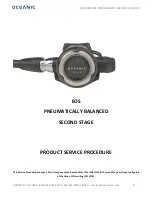
NOVUS AUTOMATION
www.fieldlogger.net
86/104
to operate without the need for a new activation. If, however, it could not make their first connection within that
period, a new activation will be required.
OPERATION
The
FieldLogger
always will start the connection to
NOVUS Cloud
, after enabled. Once it has connected and existing
data in memory, the
FieldLogger
starts sending this data to the cloud.
NOVUS Cloud
already has a template for
FieldLogger
with all its declared variables; however, the name of these variables must be set to the desired names.
Furthermore, the cloud displays a dashboard as an example with some variables in order to verify immediately if the
equipment was able to send data to it.
FieldLogger
will send the data of all the channels stored in the internal memory (and only those). The internal memory is
an auxiliary memory (buffer) to save the data and you can read it locally through any other method of transfer. In the
case of an eventual disconnection of
NOVUS Cloud
for some time, the data from this period will continue to be stored in
the internal memory, and when the connection back it will be sent to the cloud.
FieldLogger
checks for new data and send it to the cloud periodically. This period is usually equal to the logging interval,
whenever more than one minute.
FieldLogger
send all available data and will wait for the next time of transmission,
when there is any data on the memory.
There will be data transmission whenever there is data to transmit. Therefore, even if the
FieldLogger
is with the record
stopped to have filled the memory full ("full memory" mode), there may still be data transmission have not yet been sent.
FieldLogger
should send the data should to
NOVUS Cloud
with standard times in UTC ("Universal Coordinated Time")
and therefore the user must configure the
FieldLogger
with the local time zone.
DEBUGGING
In case of any problems during the start-up of the equipment in the cloud, you can use a Telnet client to view messages
that may help identify the problem. All you have to do is point the Telnet client to the FieldLogger IP address (port 23)
and observe the messages posted.
DATA LOGGING AND DOWNLOAD
Data logging can be done in the internal memory of
FieldLogger
or, optionally in a SD card (not included), which must
be inserted into the proper compartment behind the cover (or HMI), as shown in
Fig. 20
. The internal memory capacity is
up to 532,480 loggings, while SD card logging capability will depend on its storage capacity (size), assuming that the
card is empty.
Note:
Poor quality of the card can compromise data logging, causing missed logging periods at higher logging rates
or being more susceptible to data write corruption. Therefore, it is always recommended the usage of high-speed
(class 4 or higher) SD cards of established brands.
SD Card logging not available in models “
FieldLogger – USB, 512k logs, RS485
” and “
FieldLogger –
USB, 512k logs, RS485, 24 V
”.
Any kind of channels (analog, digital, remote and virtual ones) can be written into the memory. Logging is periodic and
has its period (rate) set through the Configurator software. After each time interval, the current values of the configured
channels are logged in the selected memory.
There are several ways to start and stop the loggings, and many of them can be freely combined. During the logging, all
the selected channels will be recorded in the requested memory (internal flash or SD card) based on the interval
between loggings configured.
Depending on the start and stop modes selected, there may be "snippets" of logs in memory, and therefore, periods
without any data recorded. This is fully compatible with the equipment and means no problem at all.
The start modes available are the following:
•
Immediate start: Loggings will be started right after the equipment reconfiguration.
•
By date/time: Loggings will be started on the configured date/time.
•
By alarm: When the alarm condition is met (alarm active), loggings will be started.
•
Only by Modbus commands: Loggings will be started only when a specific command is sent to the Modbus
equipment.
The stop modes available are the following:
•
Full memory: The loggings will be stopped only when the selected memory (internal flash or SD card) has no
more available space.
•
Never stop (circular memory): Loggings will be continually done in the selected memory. When filling up the
memory, the oldest data are erased so that the most recent data may be saved.
•
By date/time: Loggings will be started on the configured date/time.
•
By alarm: If loggings were started by the same alarm, when the alarm condition is no longer met (alarm inactive),
loggings are stopped. If loggings were started for some other reason, as soon as the alarm condition takes place
(alarm active), loggings will be stopped.
















































